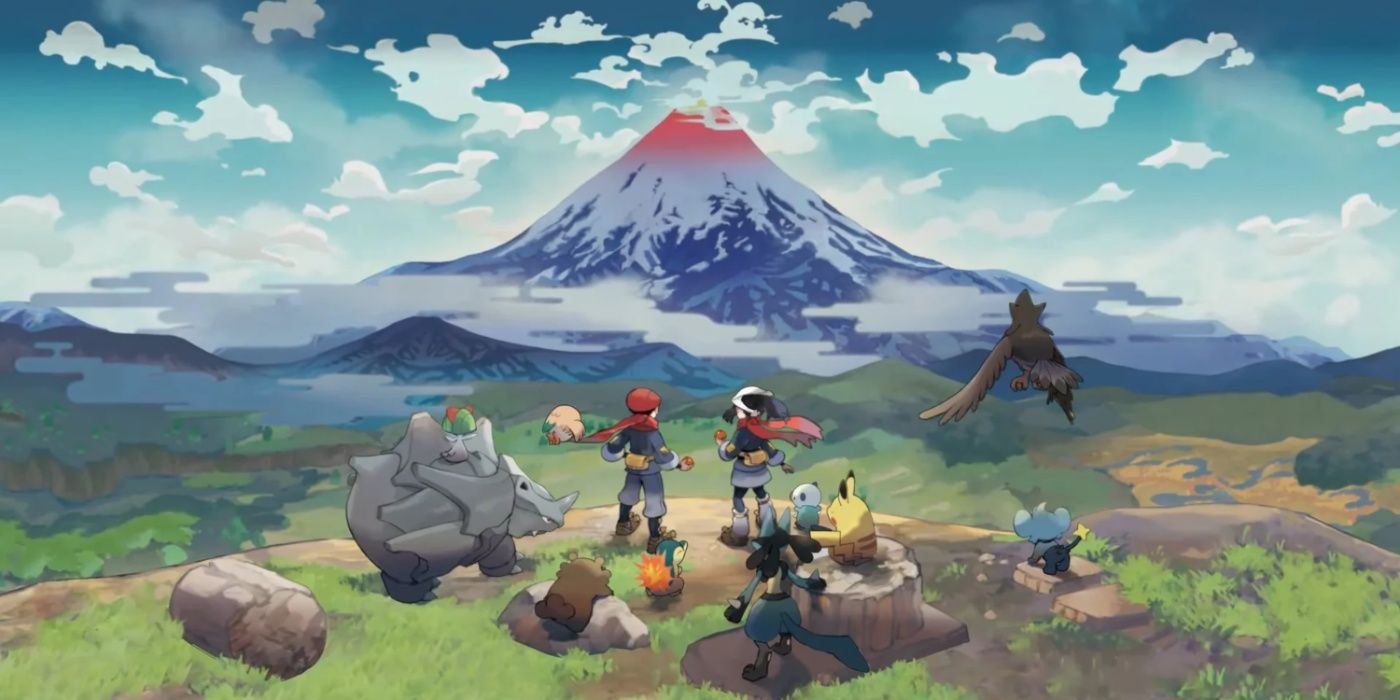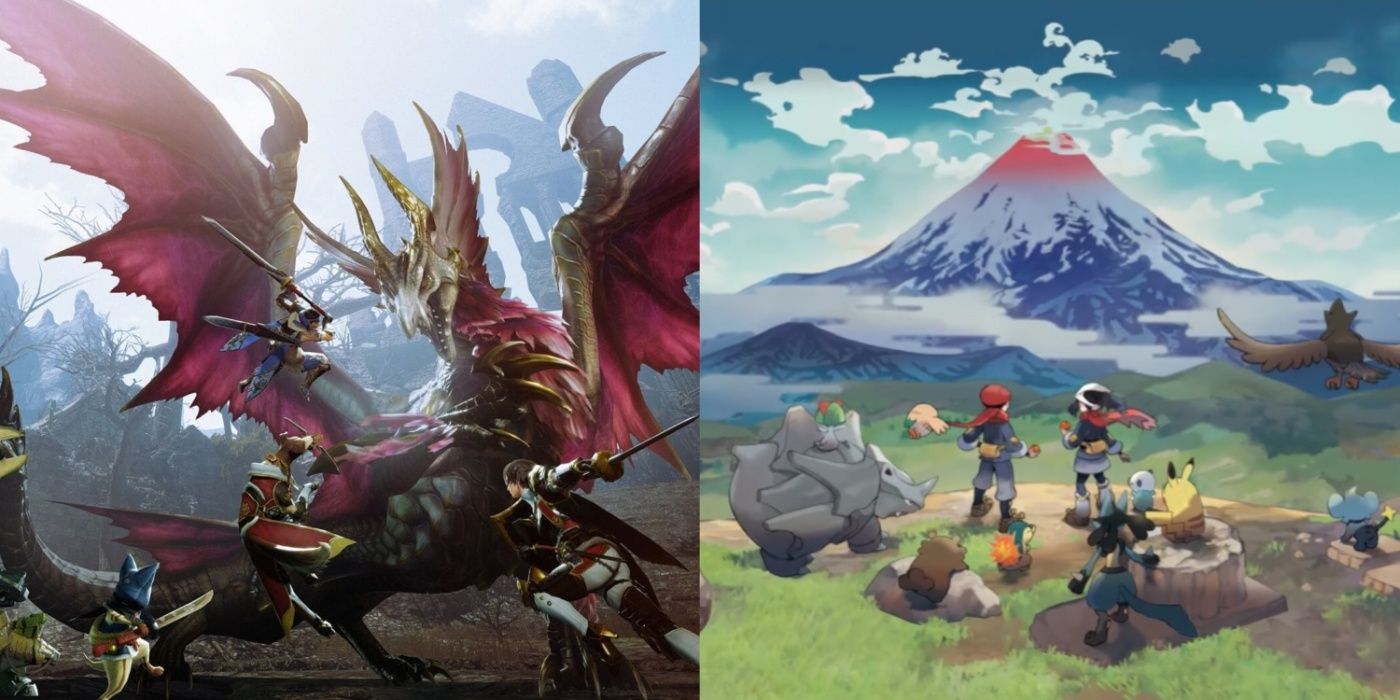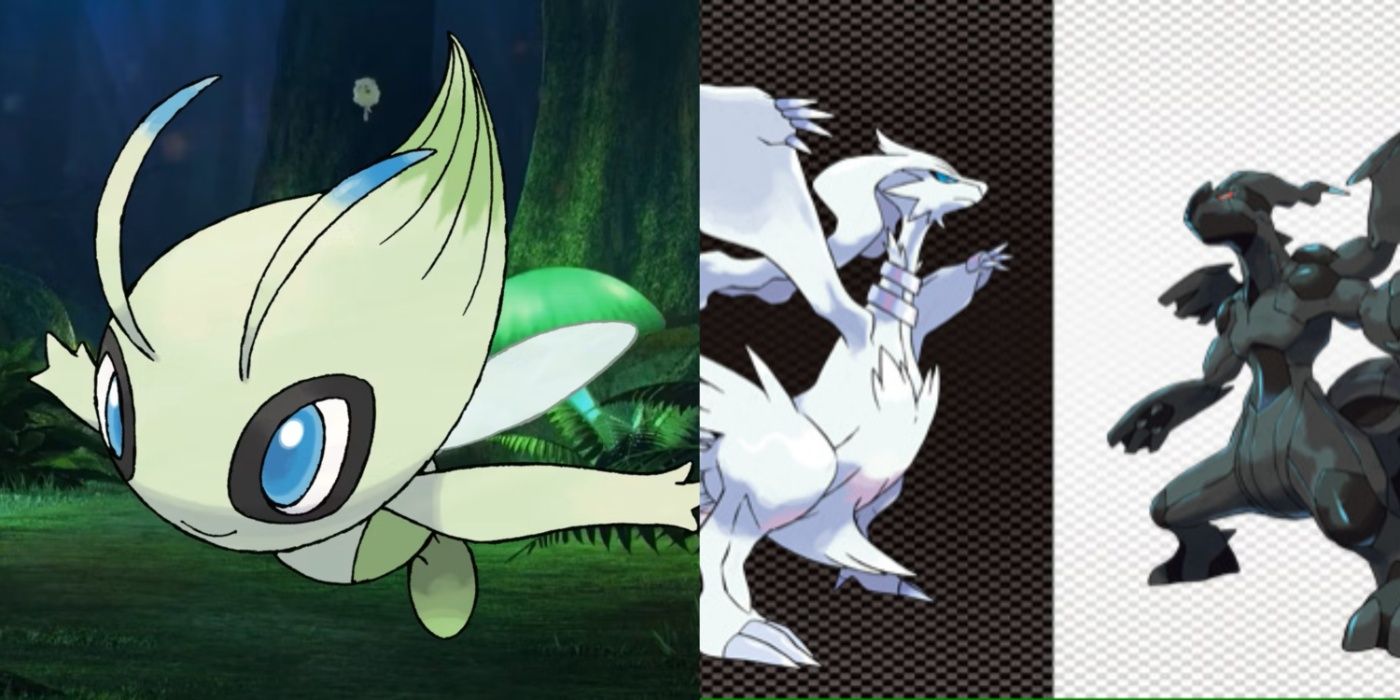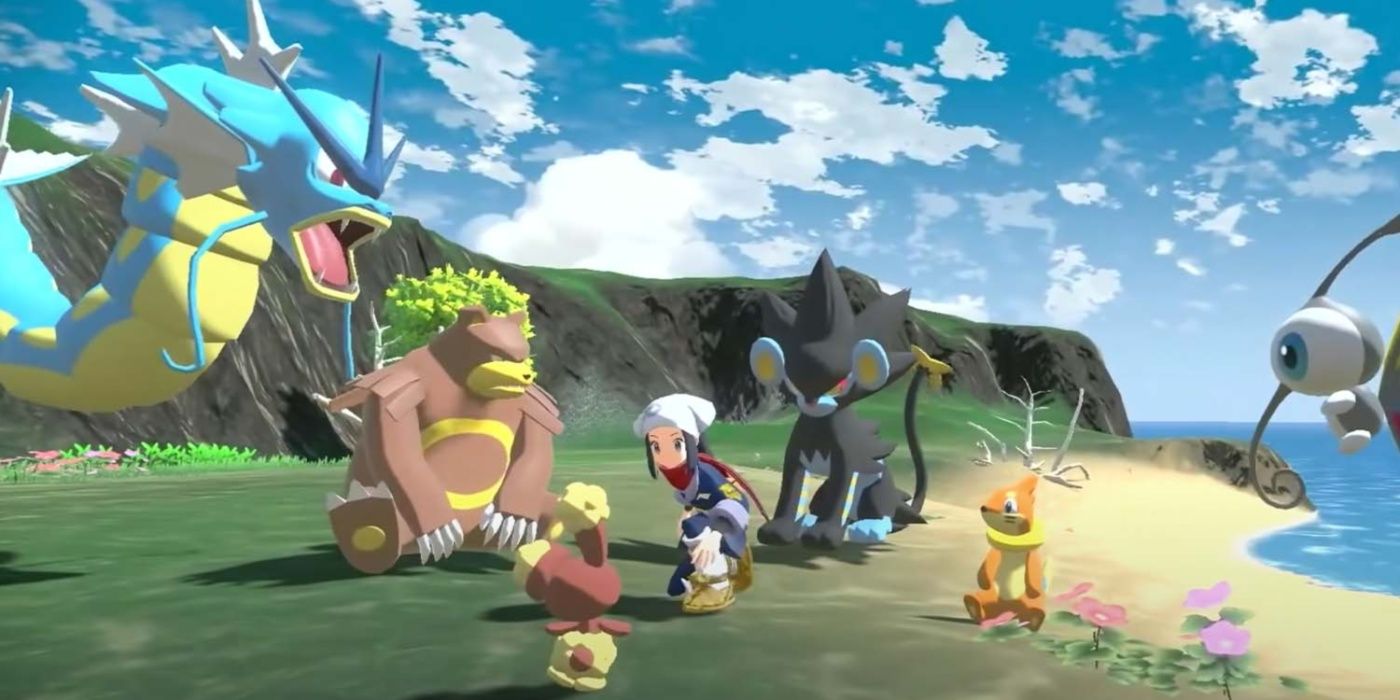Having a sound foundation is especially important in the modern age of gaming, as The Pokémon Company’s incredibly high volume of games nearly every year must be taxing on development. Between the inspired take on the Monster Hunter formula and the creative opportunities it presents, Pokémon Legends should become the mainline series’ new standard.
The Monster Hunter Formula is Both Solid and Sustainable
While it’s no question that the franchise generates an unprecedented amount of money, Pokémon games on Nintendo Switch have arguably been a mixed bag in quality. Let’s Go, Pikachu! and Eevee! were fun nostalgic romps; Sword and Shield lacked a great deal of ambition; and now Scarlet and Violet are technologically stunted. Meanwhile, Pokémon Legends: Arceus was critically well-received as a refreshing change of pace, and part of that success came from taking a page from Capcom’s long-running, yet newfound mainstream juggernaut in the form of Monster Hunter. As opposed to adopting a truly seamless open-world design, Legends: Arceus opted for a “semi-open world” format segmented in a few large sandboxes.
That design choice alone is enough to justify the Legends approach becoming a bit more of a benchmark for the mainline games going forward, as the open-world template has debatably proven to be among the industry’s biggest double-edged swords. Admittedly, it’s one of the several reasons why games like Bethesda’s The Elder Scrolls V: Skyrim is so entertaining even after nearly 12 years. However, the way the deservedly acclaimed action RPG popularized open-world gaming also paved the way for an uninspired trend of titles attempting to replicate the depth it offered. Even otherwise solid games like 343’s Halo Infinite and Ubisoft’s Assassin’s Creed Odyssey demonstrate how open worlds are, sometimes, used as marketing tactics that ultimately suffer from barren spaces or overwhelming bloat.
But the Monster Hunter blueprint of having a main hub city that operates as the player’s base of operations—buying resources, crafting items, interacting with NPCs, taking on quests, etc.—makes its case for being the most creatively sustainable model even for Pokémon. On top of likely being smoother on the development side of things, Legends games could allow Game Freak to be more creatively focused, with each biome feeling lived-in, suitably diverse, and packed with substantive gameplay content.
The alternative is looking to the indie gem Cassette Beasts, which successfully struck the balance of carving out its own identity while hearkening to Pokémon‘s golden era. Ironically, even Capcom has its own “Pokémon clone” in the form of the Monster Hunter Stories spin-off series that effectively captures that classic spirit. However, what Legends: Arceus achieved through its tasteful Monster Hunter-like influences is ideal for the mainline series should The Pokémon Company and Game Freak insist on working within the 3D realm.
Pokémon Legends Paves the Way For More Exciting Prequels
Though the Pokémon franchise seems unstoppable in the mainstream, one has to wonder about the sustainability of the games should Game Freak continue to add to the already titanic 1,000-plus-strong roster of Pokémon species. The standards for the next Pokémon games should be high quality-wise considering Scarlet and Violet‘s technical deficiencies, which felt like a step back from the progress Legends: Arceus made. And while Legends: Arceus should have been enough to give Scarlet and Violet more development time, the former title still presented a unique avenue for the mainline games before being compelled to create a whole new region with new creatures.
The 2022 title was effectively a prequel to Pokémon Diamond, Pearl, and Platinum on the Nintendo DS—and, by extension, Brilliant Diamond and Shining Pearl for the Switch—which is not something typical of Game Freak’s catalog. Prequel stories to established mainline ones aren’t a novel concept, but they provide a wealth of opportunity to other past generations of this franchise. Legends: Arceus focused heavily on catching Pokémon as is, but the whole series could be characterized by putting story and canonicity in the backseat compared to gameplay. That means that hypothetical Johto- or Unova-themed Legends games wouldn’t have to concern themselves with contradicting decade-plus-old stories.
Creatively speaking, expanding on popular or niche lore pieces alike is convenient enough to justify similar prequels, like Johto’s Celebii being known as the “Time Travel Pokémon” or the mystery surrounding Unova’s “original dragon” to Black and White‘s legendary trio. It’s all that Game Freak needs to jumpstart a premise for potential titles, but it also has refreshing elements to offer gameplay. Legends: Arceus succeeded in making the old feel new again simply by tackling the Sinnoh region from a different angle. The transition to 3D was plenty on its own, but the prequel setting opened the doors for the Hisui region to play like a whole new sandbox.
The Series’ Relentless Output Shows Legends is Game Freak’s Upper Limit
Third-party studios occasionally explore the world of Pokémon in exciting new ways to relieve the burden on Game Freak’s mainline-centric projects, but it’s impossible to deny the daunting volume of new releases with so little time in between them. Looking from the outside in, it’s also impossible to pinpoint where these decisions come from, but The Pokémon Company likely has a hand in the relentless timetables that Game Freak has to work with. And given the woeful performance and technical problems Scarlet and Violet suffer from even today, it also seems like Legends: Arceus might be the studio’s upper limit.
Despite the sheer size of the Pokémon IP in the gaming industry, it doesn’t appear that Game Freak is yet equipped to tackle large, seamless open worlds like Paldea. However, pursuing the Legends foundation is a worthy compromise. This style of mainline game offers a treasure trove of creative opportunities across the Pokémon franchise’s many beloved installments. Between approaching classic regions in exciting new ways and a proven catching-focused gameplay loop, Pokémon Legends deserves more than becoming the franchise’s latest one-off gimmick.




